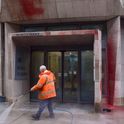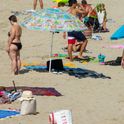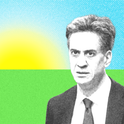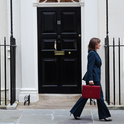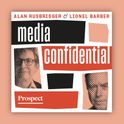Let us celebrate a British success story. Look past the disappointments: that we no longer rule the waves; that our railways, schools and life expectancy could be better; that we invented soccer but haven’t won the world cup since 1966. Instead, bask in the glory of the one claim that can be made with total confidence: our election night television programmes are the best in the world.
Over the past month, the BBC’s Parliament Channel has broadcast the results programmes from five elections of the past six decades: 1959, 1964, 1979, 1997 and 2010. Those of us who delight in such things have enjoyed 70 hours of televisual bliss. Having contributed to the 1997 and 2010 programmes, I admit I’m biased. But having seen the equivalent programmes of a variety of other countries, I insist that any objective election-obsessive would agree with me.
It’s because of the unique way our election nights combine human and statistical drama. In European countries with proportional voting systems or directly-elected presidents, the drama is usually over minutes after the exit polls appear on TV screens. American and Australian election nights are better; but as their votes are counted separately at thousands of polling stations, with the figures aggregated remotely, their systems lack the catharsis of politicians caught in the camera lights at their moment of triumph or disaster. Think of the Michael Portillo’s defeat in 1997; or Theresa May’s gaunt, tearful face when she turned up at her count in Maidenhead in 2017, knowing that her gamble on a snap election had gone horribly wrong.
In 1992, the broad grin on David Amess’s face when he had held Basildon early on for the Tories told us that John Major had defied the polls and won outright. Five years later, an equally broad grin from Gisela Stuart, marking Labour’s first gain of the night on a huge swing, converted the high probability of a landslide into cast-iron certainty.
True, the accretion of votes counted locally can provide its own studio-based drama. In presidential elections, CNN’s John King does a wonderful job analysing the county-by-county numbers as they come in from key states such as Florida and Pennsylvania. And Fox News provided a delicious moment in 2012, when the arch-Republican, Karl Rove, challenged the network’s assertion that Barack Obama had won Ohio and, with it, the presidency.
Live on air, Rove was taken to the number-crunchers working behind the set. They held their ground and were, of course, proved right. The humbling of a partisan pundit was fun to watch, but it’s no substitute for the humbling of leading politicians.
After taking part in five BBC election-night programmes with the incomparable David Dimbleby, some of my fondest memories are of the rehearsals. Among other things, these needed mock exit poll predictions, mock results from each constituency and interviews with mock politicians. Jeremy Vine was one of the stars of the 1992 and 1997 rehearsals. Had he chosen to leave the BBC he could have made a good living impersonating Michael Heseltine.
The weirdest rehearsal was the final one in 1992. Five minutes before it was due to start, we pundits were given the exit poll numbers, just as we would be, shortly before the polls closed on election night. The “poll” indicated a Conservative majority of around 20. Peter Horrocks, the editor (who, like the rest of us, had no advance warning of the figures), stepped in and insisted that the rehearsal be delayed. He wanted the final rehearsal to bear some relation to the likely outcome of the election; and with Labour ahead in all the polls, a Tory victory was plainly ridiculous. He demanded a new exit poll, and “realistic” constituency “results.”
Half an hour later, the new exit poll figures showed Labour and the Tories both with around 300 seats. Peter, I think, assumed that the mock results would then tilt the figures Labour’s way. Anyway, he was happy to go ahead. What he did not know was that the team producing the individual constituency “results” could not possibly reprogramme their figures in the time they had. And these, like the original mock exit poll, produced an overall Tory majority.
What this meant, of course, was that the rehearsal gave us something that was both immensely useful and utterly unplanned—a more-or-less accurate depiction of what actually happened on the night, with the exit poll pointing wrongly to a hung parliament and the Tories triumphing with the highest number of votes that any party has ever achieved in a general election.
If I have one criticism of how BBC coverage has evolved, it’s that it puts too much store by excessively complex computer graphics. They are technical wonders, no question. But often they take up valuable time demonstrating simple, even obvious points.
In 1997, Peter Snow’s wondrous swingometer told us, frequently and laboriously, what soon became evident: that there had been a big swing to Labour, which had won masses of seats. I thought it missed the essential point of the original device. In the 1960s and 1970s, when Robert McKenzie operated his small cardboard version, it provided a foil to David Butler’s detailed seat-by-seat analysis. McKenzie was implicitly telling the viewer: “don’t worry if Butler’s torrent of statistics is too much for you; here is a simple way of grasping the main story.” That was never the message from Snow.
More to the point, computer graphics take weeks to prepare. Decisions have to be made early in the campaign what the likely stories will be, so that the on-the-night data can be easily fed into the structure of the pre-designed graphics. The trouble is that elections are never that predictable. The 1997 programme was in almost all respects a triumph; but on the night, it did too little to explain the sharp drop in turnout, the ferocity of anti-Tory tactical voting, and the almost complete expulsion of the Tories from Britain’s major cities outside London. With less ambitious and more flexible graphics, the programme could have been even better.
In the United States one of the fixtures of election nights on NBC used to be Tim Russert and his small whiteboard. If he wanted to illustrate a point graphically, he drew a simple chart live on air. It was quick and effective. At one of our elections I offered to do the same, to pick up stories that the BBC’s computer was not programmed to tell. The response was vehement: too much had been spent on sophisticated graphics for these to be upstaged by an arrogant pundit with a piece of plastic and a pack of marker pens. With all the courage I could muster, I beat a hasty retreat.
The unsurpassable joy of rewatching old elections
British election night coverage is the best in the world and I will not hear otherwise
June 04, 2020

Photo: Barratts/S&G Barratts/EMPICS Archive

